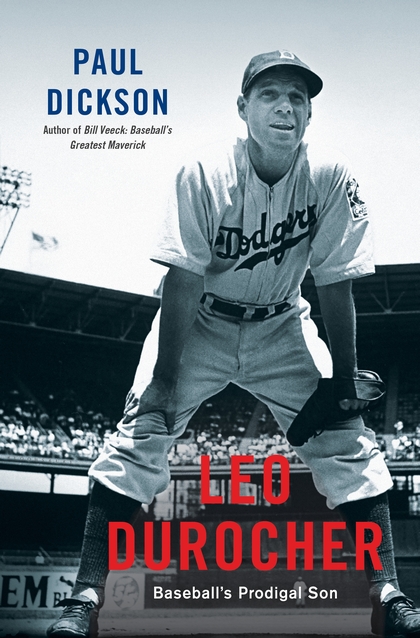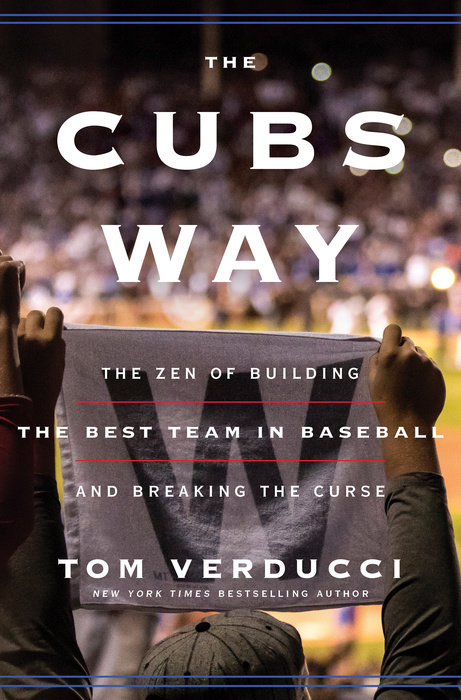2017 Spring Baseball Titles: Two Legendary Managers, the Team that Broke the Curse, and Those Swingin’ A’s
Baseball Books
2017 Spring Baseball Titles: Two Legendary Managers, the Team that Broke the Curse, and Those Swingin’ A’s

Nostalgia is always a popular topic when it comes to baseball books. This year it seems especially so.
I would dare to say that most millennial and Gen X baseball fans have not heard of either Casey Stengel or Leo Durocher (unless, in the case of the latter, they saw the 2013 Jackie Robinson biopic, 42). These baseball lifers serve as the themes of two biographies written by veteran authors, whose reputation in their profession rivals that of their subjects.
 Marty Appel, a former PR director for the New York Yankees, delivers on CASEY STENGEL: Baseball’s Greatest Character. “The Old Perfessor” is one of the few people in the game to have connections with the Yankees, Mets (as their first manager), New York Giants and Brooklyn Dodgers, starting as an outfielder in the 1920s and ending 50 years later as an unofficial ambassador of the game. His gnome-like appearance and fractured use of the language (“Stengelese”) made him a fan favorite and a living legend. (Appel includes Stengel’s testimony before the 1958 Senate Anti-Trust and Monopoly Subcommittee Hearings, which alone is worth the cover price.)
Marty Appel, a former PR director for the New York Yankees, delivers on CASEY STENGEL: Baseball’s Greatest Character. “The Old Perfessor” is one of the few people in the game to have connections with the Yankees, Mets (as their first manager), New York Giants and Brooklyn Dodgers, starting as an outfielder in the 1920s and ending 50 years later as an unofficial ambassador of the game. His gnome-like appearance and fractured use of the language (“Stengelese”) made him a fan favorite and a living legend. (Appel includes Stengel’s testimony before the 1958 Senate Anti-Trust and Monopoly Subcommittee Hearings, which alone is worth the cover price.)
Appel --- who also wrote PINSTRIPE EMPIRE: The New York Yankees from Before the Babe to After the Boss, considered the definitive history of that famous franchise --- presents Stengel as a fun-loving eccentric who didn’t get his due as a team leader because of the shtick. But you have to have something in the old brainbox to take your charges to 10 World Series in 12 years, and winning seven of them. When the 1960 Yankees lost to the Pittsburgh Pirates on a walk-off home run in Game Seven, the front office used that as an excuse to fire Stengel, claiming that at his superannuated age he no longer had the energy and focus for the job. His famous response: “I’ll never make the mistake of being 70 again.”
The Mets, looking for some angle that would attract lots of publicity in their inaugural season in 1962, took a flyer on Stengel. And although he was definitely slowing down, he connected with the younger players, the “youth of America,” as he liked to call them. It was only when he suffered a broken hip in 1965 that he decided it was time to call it quits.
What sets this one apart from previous biographies is Appel’s use of an unpublished manuscript by Stengel’s wife, Edna, which presents him in a personal light heretofore undocumented, portraying Casey as a sometimes gruff, but always caring old codger (even as a younger man).
 Durocher was a different story.
Durocher was a different story.
Paul Dickson, whose previous books on the national pastime include THE DICKSON BASEBALL DICTIONARY and BILL VEECK: Baseball’s Greatest Maverick, sticks pretty true to form in reporting on the feisty ballplayer/manager in LEO DUROCHER: Baseball’s Prodigal Son. Considered opinion holds that “The Lip” was not the nicest guy to work with, for or against. His mishandling of the 1969 Chicago Cubs --- using his veteran players to the point of exhaustion rather than take a chance with untested rookies --- led to one of the epic collapses in baseball history as the Miracle Mets stormed past them to win the pennant and World Series. He wanted to win at all costs, even if it meant, as he liked to say, knocking his mother down if she stood in his way on the base paths.
On the other hand, that drive made him famously colorblind during a time when African American players were first coming on the scene. He was the Dodgers manager during Jackie Robinson’s rookie season, or at least he would have been had his questionable moral behavior not earned him a year-long suspension. He also was at the helm of the rival Giants when Willie Mays got his start. (Durocher feuded with Robinson, upset that by the time Durocher was able to reclaim the manager’s spot in 1948, the second baseman had perhaps indulged in too many off-season banquets.)
While Dickson does his customary excellent job of research and offers a fine narrative, there’s not much in the area of new information as there is in CASEY STENGEL. Nevertheless, both are great resources for younger historians of the national pastime.
 Older than Stengel and Durocher: A World Championship by the Chicago Cubs. Those lovable losers had not won a “fall classic” since 1908. Sports pundits love to point out what was --- or was not --- going on in the country at the time: who was president, what a loaf of bread cost, etc. So it wasn’t surprising that virtually as soon as the Cubs won Game Seven against the Cleveland Indians, publishers rushed to get books about the accomplishment to press.
Older than Stengel and Durocher: A World Championship by the Chicago Cubs. Those lovable losers had not won a “fall classic” since 1908. Sports pundits love to point out what was --- or was not --- going on in the country at the time: who was president, what a loaf of bread cost, etc. So it wasn’t surprising that virtually as soon as the Cubs won Game Seven against the Cleveland Indians, publishers rushed to get books about the accomplishment to press.
One of the best of the bunch is Tom Verducci’s THE CUBS WAY: The Zen of Building the Best Team in Baseball and Breaking the Curse. Verducci, the senior baseball writer for Sports Illustrated and a broadcaster on MLB Network, shows why he’s one of the most respected names in the game with his sharp analysis of some of those “inside baseball” issues. More important, however, are the stories of some of the key members of the Cubs: Jake Arrieta and Jon Lester, who anchored the pitching staff; Kris Bryant and Anthony Rizzo, two of the mainstays of what Cubs’ fans hope will be a long and productive relationship.
One takeaway from THE CUBS WAY is that everyone should be lucky enough to have bosses like Theo Epstein, the team’s general manager, and Joe Maddon, their bespectacled field leader. Both thought outside the box, cognizant that what worked even as recently as 20 years ago might not carry over to today’s generation of players.
Epstein, of course, knows about lost causes; he brought Red Sox Nation their first championship since 1918, the second-longest drought in baseball.
 It used to be that nostalgia was reserved for teams like the Brooklyn Dodgers (THE BOYS OF SUMMER). For better or worse, the 1970s are the new 1950s.
It used to be that nostalgia was reserved for teams like the Brooklyn Dodgers (THE BOYS OF SUMMER). For better or worse, the 1970s are the new 1950s.
Jason Turbow is the latest to remind us how old we’re getting with DYNASTIC, BOMBASTIC, FANTASTIC: Reggie, Rollie, Catfish, and Charlie Finley’s Swingin’ A’s.
Charlie Finley was an innovator, a maverick. He bucked the staid establishment by introducing colorful uniforms to the game when he bought the Kansas City Athletics in 1960, moving them to Oakland in 1968. He encouraged his team to grow long hair and moustaches, and put together a juggernaut team that included the likes of Catfish Hunter, Reggie Jackson, Vida Blue, and Herb Washington, baseball’s first (and only) “designated runner.”
Finley battled with MLB Commissioner Bowie Kuhn over some of the deals the owner tried to make in casting off players for cash. Kuhn quashed the transactions, invoking the equivalent of a presidential executive order in declaring them as contrary to “the best interests of baseball.”
Turbow focuses on a team that won three straight World Championships from 1972-1974, which qualifies as a sports dynasty. Some would argue that the A’s won despite Finley, to whom the author refers as the “capital-O” Owner, a contentious, manipulating self-promoter (although sometimes exhibiting a generous side). Finley infamously coerced Mike Andrews to “resign” in the middle of the 1973 World Series after the second baseman made two errors in a loss to the Mets. That had a rallying effect on the rest of the ball club, who came to the defense of their teammate and eventually won the championship.
But the team was constantly battling amongst themselves as well. Huge egos led to arguments and sometimes more violent expression, especially with players like Jackson, who even then felt he was the “straw that stirred the drink,” a phrase he employed when with the New York Yankees. Nevertheless, they were perhaps the most successful --- and entertaining --- franchises of those swingin’ ’70s.
Turbow --- who previously wrote about the quirky unwritten rules of the game in THE BASEBALL CODES --- recreates the sturm und drang of the period in a straightforward, informative and entertaining volume, wrapping up with the equivalent of a film’s closing credits in discussing “whatever happened to” many of the team’s key figures.
--- Reviewed by Ron Kaplan (RonKaplansBaseballBookshelf.com)


